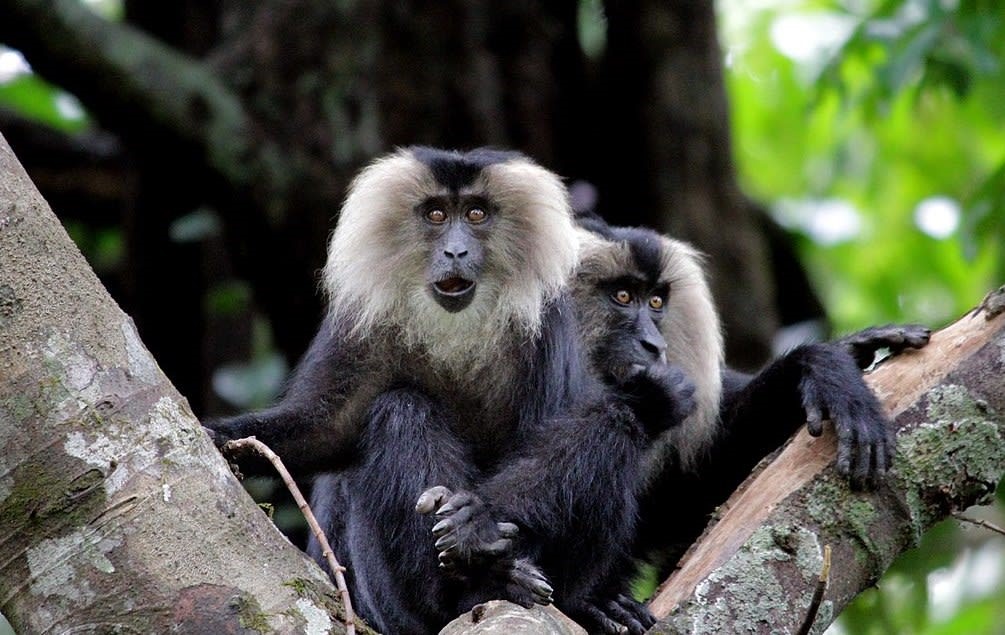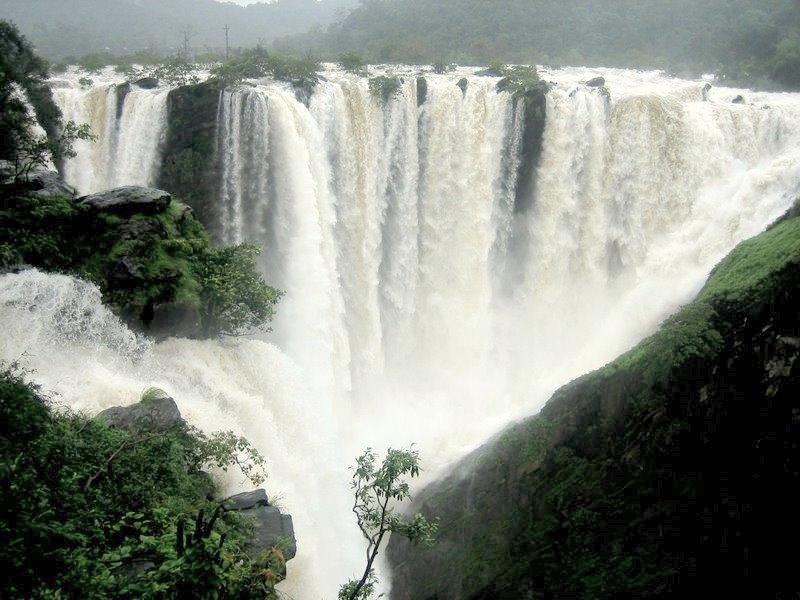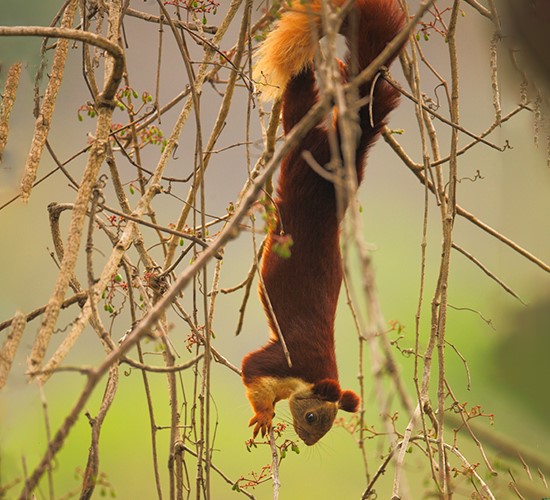- Private car and driver in Delhi / India
- +91-8447445445
- info@discoverindiabycar.com sugar.ankit@yahoo.com
 +91-9818434712
+91-9818434712
Guide to know everything about the breath-taking sharavathi wildlife sanctuary
Where is the animal sanctuary in Sharavati Valley?
The Sharavat Wildlife Reserve is located in the Shimoga district of Karnataka. There are about 350 kilometers separating it and Bangalore. This location covers an area of approximately 430 km³.Environmental elements

How to get the most out of your trip to the Wildlife Sanctuary in Haravati Valley
This location is picture-perfect year-round, with the exception of the wettest months. Because of the lower temperatures, less chance of precipitation, and generally moderate weather, the winter months are ideal for travel. Furthermore, you can travel to locations that are unreachable in the summer’s rainy months. During this period, one may come across numerous wild species, including lion-tailed macaques and sloth bears. During the rainy season, the majority of the topsoil washes away, making it difficult for seedlings to take root and flourish. Therefore, it’s difficult to locate animals right now because they’re most likely hiding.Every single animal that resides into the sanctuary

Reptiles
This place may be home to a variety of reptiles, such as pythons, king cobras, monitor lizards, crocodiles, and rodent snakes.
Avifauna
This refuge is home to numerous land-dwelling animal species and a diverse array of avian species. Here you’ll find a diverse range of colorful Indian parrots, several types of hornbills, a rare breed of flycatcher, black songbirds with tails like rackets, and more.
Butterflies and insects
A few butterfly species that live in this sanctuary are the Malabar Raven, Redspot Duke, Fluffy Tit, and Monkey Perplex. In this area, up to 84 kinds of ants and at least 180 species of creepy crawlies have been identified.
Wild beasts
At the Sharavati Wildlife Reserve, specialists from the forest department strive to protect a wide variety of uncommon and endangered animal species. It is no secret that the Lion-Tailed Macaque is an endangered species, and there are very few places on Earth where you may still view one. The tiger, the region’s most important mammal, lives here together with a variety of other creatures. There may be encounters with pangolins, otters, wild boars, porcupines, sambars, mouse deer, black jaguars, sloth bears, langurs, jackals, and numerous more wildlife.

Varieties of trees and plants
This reserve is primarily covered in vegetation. It is also feasible to come across moist, partially verdant deciduous forests. The following are just a handful of the numerous tree species that may be found in the lush woodland:
This area is home to plants that resemble caryotaurens. Meetings with Calophyllum tomentosum or Machilus macrantha are further possibilities. Other names for this spider are Dipterocarpusindicus and Aporosalindleyana.
As you approach the semi-evergreen and moist deciduous backwoods, species such as the Careyaarborea, a distinct kind of Dalbergialatifolia, come into view.
Many additional plant species, including Vitexaltissima, Randia, Emblica officinalis, Terminalia, and Hopea parviflora, are also significant. Furthermore, you may perhaps see some Dillenia pentagyna or Lagerstroemia lanceolata.
Where does the trip to go to the national park start?
By air
The area under consideration is located roughly 216 kilometers from the nearest airport, which is located in Mangalore. This airport serves a number of major cities, including Chandigarh, Bangalore, and New Delhi, by aircraft that take off from there.
By rail
The nearest train station to the city is at Shimoga. Others claim that it is not close to the reserve. If someone tried to travel there, they could arrive at the reserve in a maximum of two hours.
By road
The Sharavati Wildlife Sanctuary is conveniently located between Northern Highway 50 and Route 206, making it easy to reach by car.
Accommodation
The Adventure Camp of Sharavati is the hotel that is adjacent to the reserve. This campground is about six kilometers away from Jog Falls. This location provides an amazing view of the verdant meadows and dense woodlands below. The camping site is affordable and a great option for business and family travel, with a small number of well-maintained accommodations.
Things to do
You can walk in the footsteps of the butterflies as they dart from one flower and leaf to the next. Aside from relaxing on the beach’s cool blue waves, you may go fishing, kayaking, and coracle exploring, among other amphibian activities. Sit at the water’s edge with a hot cup of coffee and watch the sun set, painting the sky a spectrum of soft orange tones that eventually transform into an amazing display of deep red stains. If you’re in the mood for some adventure, you can explore the densely forested areas of the Sharavati Valley Wildlife Reserve even on cloudy mornings.

The park is split up into several areas:
There are primarily three different areas in the Sharavati Sanctuary. There are three designated zones: the tourist sector zone (57.53 square kilometers), the buffer zone (up to 170.67 square kilometers), and the core zone (encompassing approximately 74.3 square kilometers).
Some more delightful moments at the Sharavati:
It is important to emphasize that authorization from the forest department is needed in order to plan a wildlife safari within the park. Although the chance to set up camp next to the river can be equally alluring, the safari is undoubtedly a big draw.
There are many different kinds of forests in this significant area of the River Sharavati basin, including moist deciduous and evergreen trees. Enjoy relaxation in the center of nature and breathtaking views of the heavenly Sahyadris while lodging at the thrilling Camp of Sharavati.
Immersing oneself in the allure of the rainy season is ideal at the Sharavthi Nature Camp. After the intensely rainy mists have cleared, the weather is probably going to get better for breaking out. When you stroll through nature and take in the sounds of the birds, you could find that the calm and quiet is quite restorative.
Remembering experience
In these areas, the preservation of ecological systems should come first. When visiting these locations, be careful of the surrounding area and strive not to disturb the delicate natural balance by creating excessive noise or leaving excessive waste behind.
Final Thoughts
You cannot browse this site without becoming in awe of the sheer number of beautifully captured nature phenomena. This area is rich in flora and wildlife that are just waiting to be found, in addition to its comfortable climate. You should thus go to the Sharavati and spend the entire day there!
FAQs:
Q 1. Which animal species are most frequently connected to the Sharavathi Wildlife Sanctuary?
A. After the enlargement was completed, the old refuge was renamed the Sharavathi Lion Tailed Macaque Wildlife refuge. The enlarged sanctuary will safeguard the freshwater ecosystem of the Myristica marshes, which is home to a variety of plant and animal species, such as the Hornbill, Lion-Tailed Macaque, and Leaf-Nosed Bats.
Q 2. Why Should You Visit Sharavathi Wildlife Sanctuary?
A. This stunning site is sure to impress those who enjoy the outdoors. Along with many other threatened bird and butterfly species, you can witness hornbills, pond herons, Indian peafowls, kingfishers, and grey-headed bulbuls. The Sanctuary is home to a wide variety of species, including squirrels, langurs, and black-napped hares.
Q 3. The Sharavathi Wildlife Sanctuary was established when?
A. In 1972, the sanctuary had its formal opening.











